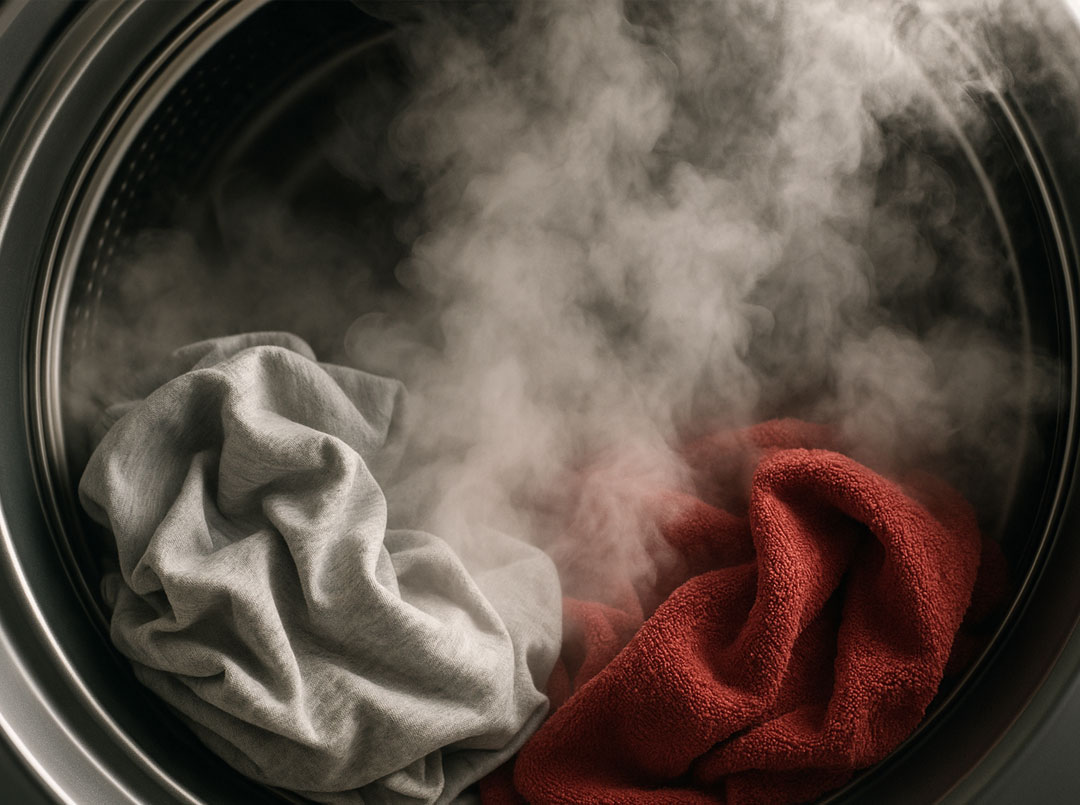
The Most Wasteful States in America in 2024
As our world strives for a greener future in 2024, the need to minimize our environmental footprint is more pressing than ever before. With landfills growing and recyclables often mishandled, lowering our collective waste production is one of the most crucial priorities to address climate change.
Reflecting HeySunday’s commitment to a cleaner, less-wasteful planet, we’ve analyzed the national statistics to identify the most (and least) wasteful states in America. Ultimately, we find that our everyday choices have an undeniable impact on the planet’s health, from the items we recycle to the laundry detergent we use. Highlighting the states trailing in sustainability, we hope to grow nationwide ecological efforts that lead to impactful, lasting change.
So, which states produce the most waste per capita how does your state rank? Find out below!

Facts & Findings
- Michigan emerges as the most wasteful state in America, with 68.27 tons of trash produced per person—a staggering 91% above the national average of 35.73 tons.
- In comparison, each resident in Connecticut only contributes 8.65 tons of waste, making it the state with the lowest trash production in the country.
- The difference between the most and least wasteful states is a jaw-dropping 59.62 tons per person. For reference, a fully loaded 18-wheeler only weighs about 40 tons.
- California has the highest total statewide waste output at 1,997,672,473 tons or nearly four trillion pounds—the equivalent of 367 million elephants. This is partially due to California having a high population size (the largest in the nation), and the other part due to it having a high per-capita waste (6th highest in the nation). On the other hand, Wyoming produces the lowest total waste, with a difference of about 1.99 billion tons.
- States like Nevada, Kentucky, and New Hampshire show an interesting pattern: they have a high waste per capita but low total waste output. This indicates that while the total waste is controlled, most likely because of their low populations, the waste produced by each resident is relatively high.
- North Carolina, New Jersey, Florida, and New York have a contrasting scenario. Despite their large populations, they manage to keep their waste per capita on the lower side, pointing toward effective waste management policies or eco-friendly waste generation habits.
How Does Our Waste Impact the Environment?
Waste management is a critical environmental concern with far-reaching consequences that affect air, land, and water. The United States faces the challenge of managing an ever-growing trash problem, which includes the following:
Air Pollution
Landfills are one of the most common solutions to dispose of waste, but they’re far from harmless. In addition to blemishing land and removing space for agriculture, landfills pose a significant air pollution risk as the third largest emitter of methane, a greenhouse gas twenty-eight times more potent than carbon dioxide. Moreover, incineration is another standard disposal method, yet it also releases carbon dioxide, dioxins, and particulate matter into the atmosphere without proper filtration.
Soil and Water Contamination
The environmental toll of waste management extends below the surface to areas we might not necessarily see. Leachate is a contaminated liquid that can seep out of landfills and into the surrounding soil, potentially reaching groundwater sources and making them unsafe for consumption. Similarly, toxic substances from electronic waste and hazardous materials can lead to soil degradation, affecting agricultural productivity and disrupting ecosystems.
Biodiversity and Health Concerns
Waste disposal sites can displace wildlife, impede pollination networks, and delay the soil regeneration process. However, it can also affect nearby residential areas and raise health concerns, potentially leading to respiratory problems, skin irritations, and other health issues. Landfills can also attract rodents and insects, which can carry diseases and affect the quality of life for nearby inhabitants.
What Makes Up Our Waste?
According to the EPA, America’s collective municipal solid waste (MSW) output was 292.4 million tons in 2018, with paper and paperboard contributing 23.05% (67,390,000 tons)—the most of all categories. Food waste is the second largest contributor at 21.59%, followed by plastics (12.90%), yard trimmings (12.11%), and metals (8.76%).
The EPA reports that 69.1 and 42.6 million tons of waste were recycled and composted, respectively, accounting for about 38% of the total waste produced. In comparison, 146.1 million tons went to landfills, and 34.6 million tons were combusted with energy recovery, which makes up the remaining 62%.
The composition of our waste not only reflects our consumption patterns but also our approach to resource management and disposal. The statistics highlight a stark reality: while a significant portion of our waste is reclaimed through recycling and composting, the majority still ends up in landfills or incineration plants.
Eco-Friendly Tips to Reduce Individual Waste Output
America’s total trash output is even higher in 2024, pressing the need for enhanced waste reduction strategies and improved recycling initiatives. However, the waste we produce in our daily lives is ultimately a choice, not an inevitability, and we can each take action to minimize our impact. Here are effective strategies to reduce individual waste output:
Conscious Consumption and Packaging Choices
Being mindful of everyday consumer purchases can lead to less waste generation. It’s crucial to select products with recyclable or compostable packaging, such as laundry detergent sheets, to minimize the amount of waste that ends up in landfills and incinerators. Additionally, buying products with eco-friendly, lightweight designs can reduce shipping emissions.
Invest in Reusable and Sustainable Products
Opting for reusable items over single-use disposables can significantly cut down waste. From shopping bags to water bottles, choosing long-lasting, durable products is a simple yet impactful decision. Likewise, investing in sustainable products made with renewable resources further supports waste reduction efforts.
Embrace Recycling and Upcycling
By recycling paper, plastics, metal, and glass, we minimize the need for raw materials, conserve energy, and decrease greenhouse gas emissions. Still, always reference your local waste pickup policies to determine what you can and cannot recycle, ensuring what you throw away makes it to the right place. Alternatively, you can try upcycling, the creative reuse of by-products or waste materials, to transform what would be trash into valuable new products.
Bulk Purchases and Container Reuse
Buying in bulk, especially when you can bring your containers, reduces packaging waste and often saves money. This practice is common in food co-ops and is becoming more accessible in mainstream stores, encouraging a cycle of reuse that aligns with zero-waste goals.
Methodology
We analyzed population data and technical statistics from landfills nationwide to determine how much waste has been generated per person in each state. We then compared the per capita waste of all states to determine which are the most wasteful. The data sets we used in our analysis are:
- United States Environmental Protection Agency: Landfill Technical Data
- United States Census Bureau: State Population Totals and Components of Change: 2020-2022














“My sheets have never felt cleaner. I’m hooked.”
“Finally — detergent that actually works and doesn’t take up half the shelf.”
“Hey Sunday WORKS. Great for stains, and no buildup in the washer.”
“We switched from liquid. The scent is amazing and it saves us money.”
“I’ve got total control with HeySunday. I’ll never go back to powder.”